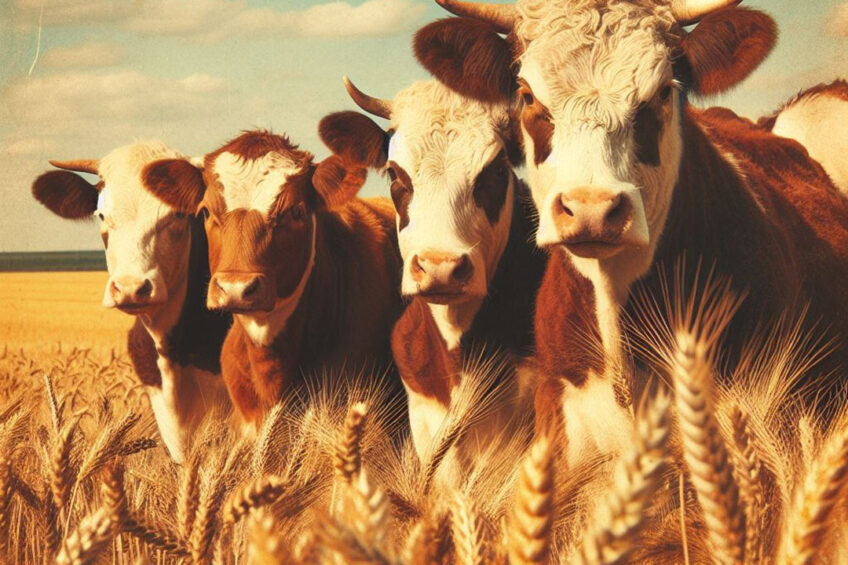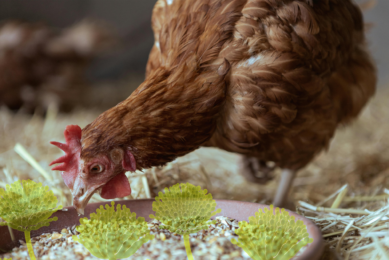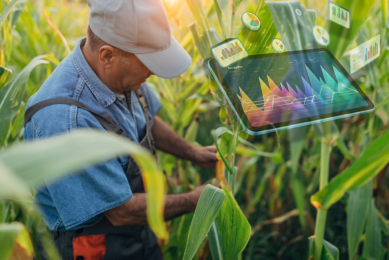World Mycotoxin Survey shows ongoing rise over the past year

Levels of mycotoxins continued to rise last year with increasing numbers of samples showing the presence of more than 5 mycotoxins, according to the annual dsm-firmenich survey.
Mycotoxin trends going back from 2004
Anneliese Muller, mycotoxin technical expert dsm-firmenich, looked at the trends and breakthroughs of mycotoxin research over the past 20 years since the first world survey was undertaken in 2004. She looked at the Fumonisins (FUM) trends for corn kernels in North America from January 2004 to December 2023, which showed that the highest prevalence percentage of FUM recorded was 80% in 2007, while the highest average concentration was 4732ppb in 2014 with considerable variation. In the majority of years, FUM prevalence was found in around 60% of samples taken. Such statistics enable the company to improve their forecasting, she said.
2023 Analyses: 6 major mycotoxins
Doris Hartinger, research and development scientist at dsm-firmenich, said nearly 24,000 samples were undertaken and over 113,000 analyses carried out in 2023 for the 6 major mycotoxins from 95 countries. Samples were analysed through different methods – ELISA, HPL and LC-MS/MS.
Sub-regions with severe risk
Hartinger said the percentage of samples testing positive for at least one mycotoxin of the 6 main mycotoxins above the threshold level in ppb – in 2023 included South America, certain regions of sub-Saharan Africa and South Africa and South East and Central Asia. Parts of southern Europe moved from moderate to severe risk last year while extreme risk levels continued in North America and parts of China.
Co-contamination is now becoming quite common rather than rare
61% showed co-contamination
She said a total of 61% of all samples taken showed co-contamination (ie the presence of more than one mycotoxin), while 24% had one mycotoxin, leaving 15% of samples below the level of any detection. Co-contamination, she added, could lead to possible detrimental additive and synergistic effects in poultry, pigs and fish: “Co-contamination is now becoming quite common rather than rare,” she added.
6% rise in risk
Sander Janssen, mycotoxin risk manager Europe, said 9,685 feed samples had been taken to analyse the 6 main mycotoxins – Afla, ZEN, DON, T2, FUM and OTA. Most of Europe showed a moderate risk (26-50% samples above the risk threshold) but in southern Europe this rose to between 51-75%. The average for the region was 46% – up 6% on 2022 figures and analysis of samples since September show a continuing rise.
DON most prevalent mycotoxin
Janssen said DON was the most prevalent mycotoxin found last year (60% compared to 46% in 2022) followed by ZEN (54% compared to 42%), FUM (45% compared to 34%) and Alfa (17% compared to 11%). For DON, 35% of samples were above the risk threshold with the average of 526ppb. Only levels of OTA remained stable compared to last year. Two thirds of samples showed the presence of more than one mycotoxin. For example, 5 or more mycotoxins were found in 88.6% of samples of maize silages and wet corn and this rose to nearly 95% when straw samples were analysed.
Poultry feed
Turning to poultry finished feed, Janssen said samples taken from north Africa and the Middle East showed a 100% prevalence of B-Trichothecenes with an 85% level above the risk threshold and a highest concentration of 5907ppb.
In sub-Saharan Africa, the risk level was 71% compared to 66% in 2022 (+5%) with the highest rises coming in ZEN (+12%) and DON (+7%). When looking at all commodities nearly 72% of samples contained more than 5 mycotoxins and this level rose to 90% when looking at poultry and pig finished feed.
Impact on livestock feed producers
Martin Witek, mycotoxin product manager Romer Labs, looked at the evolution of mycotoxin testing and its impact on livestock feed producers. Witek said it was now possible to look at more than 400 mycotoxins in one run and there had been the emergence of lateral flow devices which provided fast and simple on-site results in less than ten minutes for incoming raw materials in a variety of agricultural commodities, for example.
Elle Chadwick, dsm-firmenich poultry feed quality specialist, said mycotoxins affected gut integrity and could predispose disease. There is evidence, she said, that as well as disturbing the bird’s digestive microflora, they could also facilitate pathogen growth, damage the gut barrier integrity and alter immune function. Mycotoxins also reduce nutrient utilisation in the birds, leading to a higher FCR when mycotoxins are present, affecting profitability.
Impact on livestock health
A total of 80% of samples had more than one mycotoxin and only 6% of samples showed no detection. Passos said mycotoxins produced harmful effects on reproduction – the development and functionality of the uterus and ovaries, impacting oocyte development and disruption of pregnancy hormones – immune competency and bone health, leading to bone fragility and arterial dysfunction. Oxidative stress induced by mycotoxins can also adversely affect bone homeostasis and can lead to skeletal fragility. Mycotoxins can also be a predisposition for other diseases, he added.
Aquafeed: Mycotoxins costs the sector US$5 bn
Benedict Standen, dsm-firmenich aqua specialist, said there was increasing pressure to seek alternatives to fish meal. But replacing it, he said, it could lead to unwanted contaminants such as mycotoxins, which negatively impact the immune system, making it less efficient, increasing FCR. This combined with record high sea temperatures in 2023 puts further pressure on species, causing additional stress. Mycotoxins cost the aquaculture industry $5bn every year, he added.











